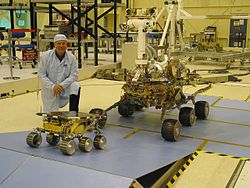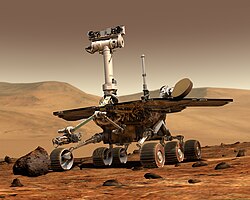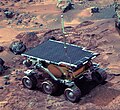- Size comparison of the Mars Exploration Rover (rear) and the Sojourner rover
- Mars Science Laboratory (R); Mars Exploration Rover (L) and Sojourner rover (centre)
- Mars Exploration Rover
External links
- The CPUs of Spacecraft Computers in Space
- Radiation‑hardened electronics product guide - BAE Systems
| Past missions | ||
|---|---|---|
| Current missions | ||
| Planned missions | ||
| Related | ||
Missions are ordered by launch date. Sign † indicates failure en route or before intended mission data returned. | ||
| Mars Pathfinder (Carl Sagan Memorial Station) | ||
|---|---|---|
| Mars Pathfinder instruments | ||
| Key personnel | ||
| Related | ||
| General |
| |
|---|---|---|
| Spirit rover | ||
| Opportunity rover | ||
| Instruments |
| |
| Related |
| |
| General | ||
|---|---|---|
| Instruments | ||
| Features | ||
| Sites | ||
| Rocks | ||
| Related | ||
| Payloads | |||||||
|---|---|---|---|---|---|---|---|
| Rover instruments | |||||||
| Features | |||||||
| Proposed landing sites |
| ||||||
| Related | |||||||







